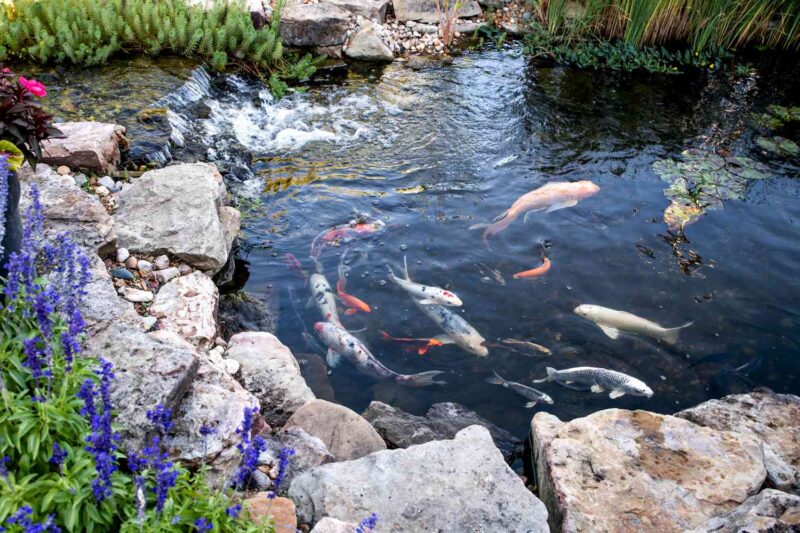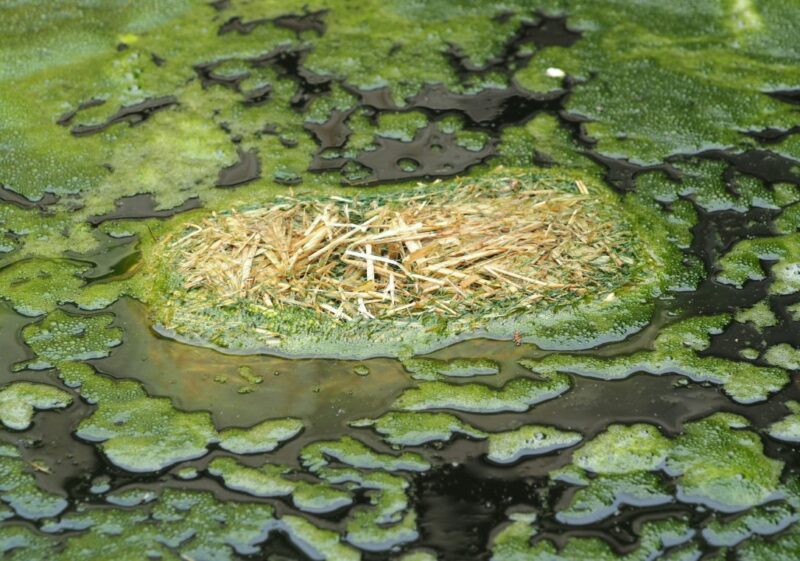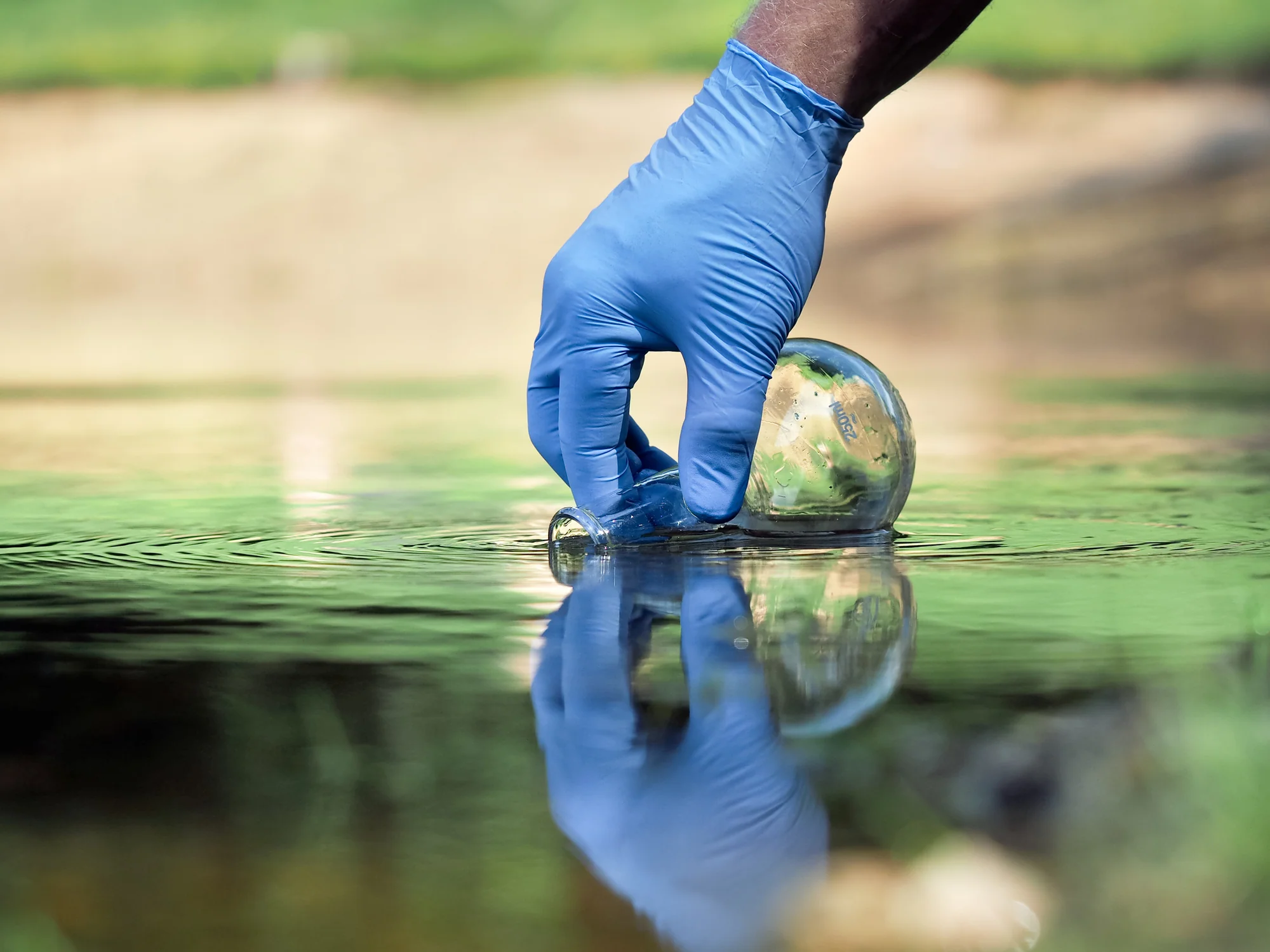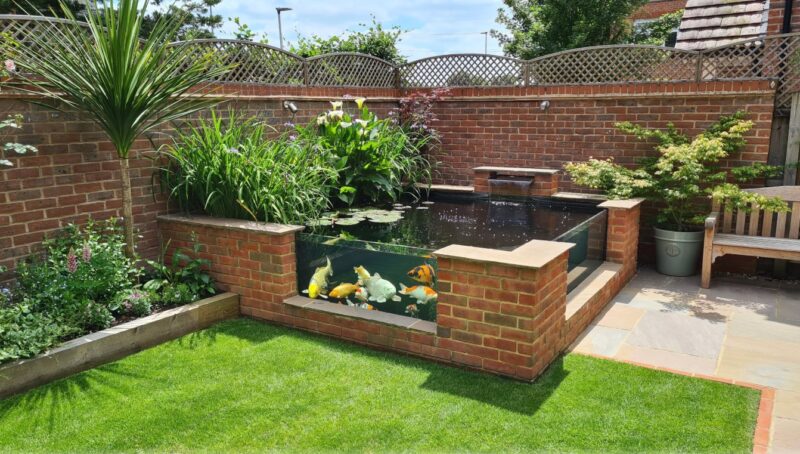Creating and maintaining a vibrant pond isn’t rocket science, but it does take some effort. Whether you’re tending a small backyard oasis or a sprawling water feature, the key lies in understanding what works—and what doesn’t.
A balanced approach helps keep things running smoothly while creating a picturesque and thriving environment.
Key Points:
- Balance is essential for a thriving water habitat.
- Avoid overfeeding fish to prevent algae buildup.
- Add plants strategically to keep the water clear.
- Regular cleaning prevents buildup of debris.
- Avoid using chemicals that harm aquatic life.
Keep Your Pond Healthy with Expert Help
Maintaining your water feature can feel overwhelming, especially when problems like green water and sludge crop up. That’s where expert services come in handy. That Pond Guy offers a wide range of solutions to help keep your pond pristine.
From fibreglassing to custom designs, they provide professional support tailored to your needs. With their help, your water feature can become the stress-free sanctuary it was meant to be.
Start with the Basics ─ Avoid Common Mistakes

Successful maintenance starts with steering clear of rookie errors. One of the most common mistakes is overfeeding fish. Extra food sinks to the bottom and contributes to a buildup of organic waste, fueling algae growth. Avoid adding too many fish to the water, as this strains the system and increases waste production.
Invest in a reliable filtration system to keep things moving and ensure that waste doesn’t settle. Regular water testing is another must. Check pH levels and nutrient balances to avoid conditions that harm fish or plants. These small steps can prevent big headaches later.
Plants Are Your Pond’s Best Friends
Aquatic plants do more than just look pretty. They absorb excess nutrients, provide oxygen, and create shade, which helps keep water cool and reduces algae growth. Marginal plants like cattails and submerged plants like anacharis are excellent choices for keeping the environment balanced.
Floating plants such as water hyacinth or duckweed minimize sunlight penetration, reducing algae’s ability to thrive. Adding native plant species can also make maintenance easier, as they’re naturally suited to the environment and require less attention.
Why plants matter:
- They act as natural filters, absorbing excess nutrients.
- Provide shade and reduce water temperature, protecting fish.
- Create habitats for beneficial insects and wildlife.
Regular Cleaning Keeps Things Fresh
Debris buildup is inevitable, but ignoring it can cause serious problems. Leaves, twigs, and fish waste can decompose, releasing harmful gases and creating a breeding ground for bad bacteria. Regular cleaning keeps the water clear and prevents issues before they spiral out of control.
Use a skimmer net weekly to remove floating debris, especially during autumn when leaves are abundant. For deeper cleaning, a pond vacuum works wonders in clearing muck from the bottom. Filter pads should be rinsed in water from the pond to retain beneficial bacteria while removing dirt.
Keep Algae Under Control Without Chemicals

Nothing dampens the beauty of a pond faster than green water caused by algae blooms. Algae feed on sunlight and excess nutrients, so controlling those two factors is key. While chemical solutions might seem tempting, they often harm fish and plants, throwing the ecosystem off balance.
Natural solutions like barley straw are a safe and effective alternative. Barley straw releases natural compounds as it decomposes, which inhibits algae growth. Another option is to use beneficial bacteria additives. These products break down organic waste, depriving algae of their food source.
Fish Need Proper Care
Your fish are more than just decorative; they play a vital role in the ecosystem. However, keeping them healthy requires attention to detail. Overfeeding is one of the most common mistakes. Excess food sinks to the bottom, creating waste and disrupting the balance of the pond.
In colder climates, fish care becomes even more important. Ensure they have adequate oxygen during winter months by using a floating ball or de-icer to keep a small area of the surface open. Monitor your fish for signs of illness, such as unusual behavior or physical changes, and address issues promptly.
Aeration ─ The Secret to Crystal Clear Water
Proper oxygen levels are essential for maintaining a thriving water environment. Aeration systems ensure water circulation, preventing dead zones where algae and bacteria thrive. An added bonus of aeration is its ability to support beneficial bacteria, which break down waste and keep water clean.
Solar-powered aerators are an eco-friendly option that works well in sunny locations. If your water feature includes a waterfall or fountain, it may already provide enough aeration, but adding a separate system ensures every corner gets sufficient oxygen.
The Role of Beneficial Bacteria in Balance

Beneficial bacteria act as the unsung heroes of your pond. They break down organic waste, such as fish waste and decaying leaves, turning it into harmless byproducts. This process prevents nutrient buildup, which would otherwise fuel algae growth.
Adding bacteria treatments regularly can help maintain a balanced environment. These products are safe for fish and plants and work well alongside natural filtration systems. For best results, introduce bacteria after cleaning or during the spring to give your pond a head start for the season.
Benefits of beneficial bacteria:
- Reduces sludge and organic waste.
- Improves water clarity.
- Supports overall balance.
Seasonal Adjustments for Long-Term Success
The needs of your pond change with the seasons. During spring, focus on cleaning and reintroducing beneficial bacteria. As summer heats up, monitor water levels and aeration to combat evaporation and low oxygen.
In autumn, falling leaves become the biggest challenge. Use a net to cover the water and catch debris. Winter requires extra care to ensure fish survive freezing temperatures. A heater or de-icer helps maintain an open patch of water, allowing gases to escape and oxygen to enter.
Seasonal checklist:
- Spring ─ Deep clean and restart bacteria treatments.
- Summer ─ Maintain aeration and check water levels.
- Autumn ─ Cover water with a net to catch leaves.
- Winter ─ Use a de-icer to keep water from freezing.
Conclusion
Caring for a pond involves more than just throwing in some fish and plants. By following the dos and don’ts, you can create an environment that thrives year-round.
Avoid common mistakes, invest in proper equipment, and consult experts when needed. With a little effort, your pond will remain a source of beauty and tranquility for years to come.

